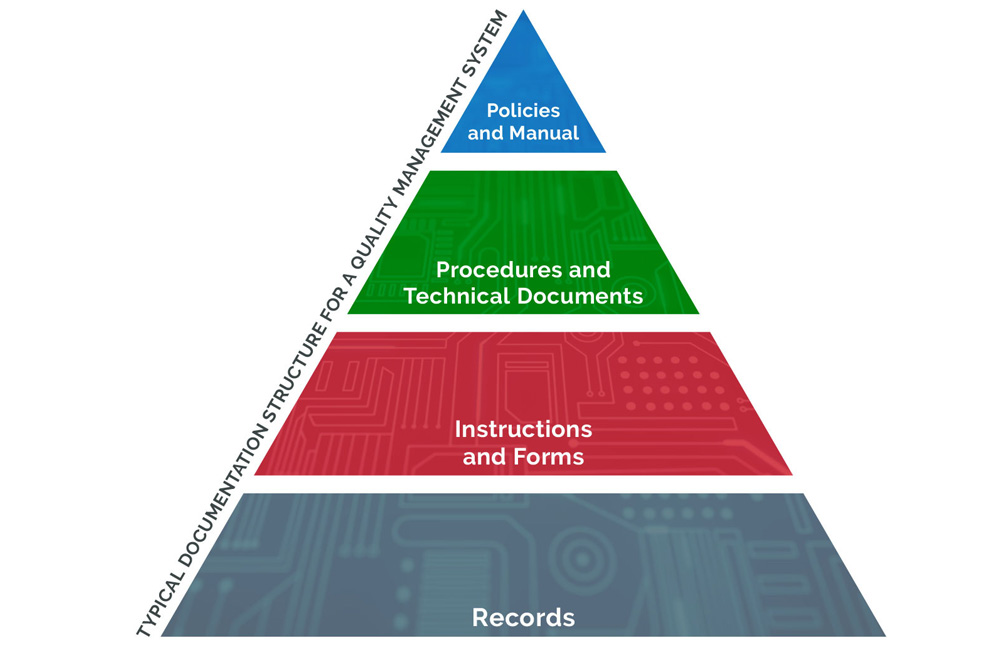Creating Paper Trails Without Paper: Making the Switch to Digital QMS
 With the increasing complexity of the medical device market, manufacturers are faced with an extensive list of product commercialization challenges ranging from mounting standards and regulatory changes, slow and expensive R&D, and supply chain disruption, to providing better cybersecurity features for new connected devices. The one common denominator that links these product development initiatives together is—information management.
With the increasing complexity of the medical device market, manufacturers are faced with an extensive list of product commercialization challenges ranging from mounting standards and regulatory changes, slow and expensive R&D, and supply chain disruption, to providing better cybersecurity features for new connected devices. The one common denominator that links these product development initiatives together is—information management.
Over the years, paper-based processes have been the modus operandi for many companies that manufacture complex products or operate within highly regulated industries. When paper-driven processes are utilized, they cost your company money. For instance, the Food and Drug Administration’s (FDA’s) premarket approval (PMA) application is extensive and includes several requirements, such as alternative practices, clinical study results, a full description of the device, and a marketing history.
A complete PMA application, which may be hundreds of pages long, must be submitted to the FDA in six copies. This quickly turns into an expensive document when you account for printing, binding, mailing, any last-minute edits, manual page removal, and replacement. A multipage PMA application with six copies could cost thousands of dollars to compile and mail.
It isn’t just the price of the paper that’s an issue. Other disadvantages of paper-based quality management processes are slowness, lack of transparency, and accuracy. A quality management system that is mainly reliant on paper cannot move quickly, which explains why businesses spend so much.
In addition, to meet quality management system (QMS) standards, medical device manufacturers must preserve documented records of design reviews, customer complaints, software validation and verification, training, and design controls documented in a design history file (DHF). They also need to meet the quality system standards of FDA 21 CFR Part 820—medical device manufacturing necessitates strict document control.
When paper quality processes ruled
Paper has traditionally been the universal proof of conformity, as well as the source of legally binding documents. Paper is used, acknowledged, and trusted by both enterprises and certifying agencies. Paper has a position in quality management paperwork, from application records to certificates.
Before digital quality management systems, the company’s quality manager had to maintain binders and folders that published the latest quality practice. Keeping the binders and folders current could be a chore, especially if the company had several workstations.
A typical workstation might share a bookshelf with 10 operators. The shelves typically housed binders, folders, standard operating procedures (SOPs), instructions, and other industry standards. Part of the quality manager’s job was to know when an order was changed, print the updates, then go to each workstation, pull the old version, and replace it with the new one.
Oftentimes the manager would miss a change, or they’d miss a station. The operators didn’t know unless they saw the manager swap out the documentation. Typically, the first section of each binder was a ledger of changes that were often missed by the operator.
Like the example cited, many medical device manufacturers are finding their companies at a crossroads—either continue amassing thousands of documents that need to be uploaded, revised, tracked, and stored, or invest in a digital solution to better manage documentation.
What are the benefits of implementing a digital quality management system?
If you don’t have a digital quality management system, you cannot produce acceptable documentation for regulatory submission. A design history file or device history file (DHF) or the technical file must demonstrate that you had in place document record control, design control, change control, risk management, and human factors procedures, just to mention the key ones.
It can be a challenge to feel the actual impact of an inefficient system daily, but if you start tracking every request you receive and how long it takes to fulfill, you could be amazed at how much time you spend over weeks or months. How often do you have to sign something, provide a copy of a handbook or procedure, or provide the most recent version of something, or how long do you spend looking for information?
Repeatable problems with paper-based QMS systems:
Missing documents. It doesn’t take much for a paper to get lost or for key personnel to fall out of the loop due to errors in paperwork. Missing documents can lead to an unsatisfactory FDA inspection and/or an ISO audit.
Where does the original document reside? Even while electronic copies kept on local hard drives or your server are more likely to be the “master copy,” some firms consider paper to be the “master copy.” When no one is looking at the original paper document, it can become out of date quickly.
Sticky notes. Oftentimes sticky notes or scraps of attached paper are popular, especially in the DHF. Oftentimes, notations do not apply to the document, causing confusion, or they are used as a reminder, but most times the situation is never addressed. Also, inspectors may see sticky notes as red flags because why are they there if all the paperwork is current?
Undocumented changes. What happens to documents as they move around the company? As team members receive the document, they may make edits or markups. This means that crucial persons aren’t aware of where they’ve already signed off on a document. This is a bad practice since it makes your decision-makers believe they’ve signed off on something when, in fact, adjustments have been made that they’re unaware of.
Missing signatures. Imagine confidently handing over documentation to an FDA inspection, believing that everything is in order, only to discover that the signature page has missing signatures.
Communicating changes. It’s challenging to communicate with remote staff and vendors. The trend for offices and teams to be dispersed has only expanded. Paper is transmitted from one site to another. Email can be used to share documents, but this poses a separate challenge because keeping track of the most recent version of a document that has been passed around by email is difficult at best.
If these issues keep coming up within your organization, then it’s time for you to transition from paper to a digital enterprise quality management system (eQMS) solution.
Transitioning to a digital quality management system
One of the more important innovative technologies that has the potential to greatly improve medical device development processes is a paperless approach to quality management.
As more companies move toward a digital quality management system, they’re realizing a digital eQMS offers better accessibility and document management with faster and more streamlined processes that affect both efficiency and your organizational culture.
While one of the most important functions of a digital eQMS is to better manage quality processes and records, the shift from a standard paper system to a digital eQMS requires time and investment, and many companies procrastinate when it comes to deciding.
The most significant element of any eQMS is that it is tailored to your specific business goals based on the size, industry, or internal operations, as each organization needs a slightly different solution.
Many paper-based companies are aware of their lack of process and discipline when it comes to managing their workflow. Before transitioning to a digital QMS system, teams should review their workflow and look for a QMS solution that can cover most of the workflow process. Don’t compromise on what’s important when it comes to configuration—find a solution that allows flexibility so you can configure and maximize best practices in your:
- Workflows
- Forms
- Fields
- Reports
- Business rules
Checklist for implementing a digital QMS
These are the common stages a medical device company would follow when implementing an eQMS:
Stage 1 – Digital QMS
- Process changes and electronic signatures
- Template management
- Policies and quality manual
- Standard operating procedures (SOP)
- Work instructions
- Learning management
- Any quality record in an electronic format
Stage 2 – Design Control (Applies to medical devices or combination devices)
- Managing projects
- Managing change control
- Electronic design master record (eDMR)
- Electronic design history file (eDHF)
Stage 3 – Suppliers and Equipment
- Supplier management
- Equipment management
Stage 4 – Production and Process Controls
- Purchase orders
- Material control
- Incoming inspection
- Manufacturing order/Master Batch Record (MBR)
Stage 5 – Key Product-Related Records
- Audit management
- Nonconformance (CR) management
- CAPA management
- Device history record (DHR)
- Complaint management
Stage 6 – Risk
- Risk management
Stage 7 – Post Market Surveillance
- Collect and review results—quality, performance, and safety
How do you introduce a digital quality management system?
Transitioning from paper to a digital QMS won’t happen overnight, but if you select a solution that is easy to use and implement and has the industry expertise to guide you through the transition, you’ll be up and running with your new electronic quality processes in weeks vs. months or years. Read about key QMS questions to ask when looking for a QMS Solution.
A comprehensive quality management system
Implementing a QMS solution affects every aspect of your business from meeting customer and regulatory requirements, creating room for expansion and innovation, to ensuring processes are defined and controlled. Arena helps you document and manage closed-loop quality procedures for device master records (DMRs), design history files (DHFs), training records, corrective and preventive actions (CAPAs), and bills of materials (BOMs).
Arena’s product-centric quality management solution combines quality and product design in a single, secure system. This allows you to bring new devices to market quickly while remaining compliant with regulations. With a comprehensive digital QMS, medical device development companies can deliver products to market faster and with fewer errors.
Are you ready to switch to a digital QMS? See why Arena Quality Management System is rated #1.

